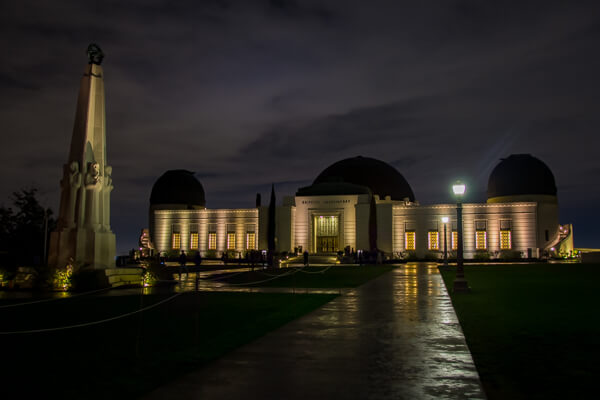

Do you have to pay for Griffith Park?ĭid you know? It's actually free to park in the observatory's parking lot during these times: On Mon to Fri from 5:00 A.M – 12:00 P.M. Admission is free, and visitors may drive directly to the Observatory and park in its lots and roads. Located in on Mount Hollywood in Griffith Park, the Observatory offers a planetarium, exhibits, public telescopes, cafe, bookstore, and the best views of the Los Angeles basin.

Can you still go to Griffith Observatory? The view from the observatory at night is magnificent on a clear night, with the lights of LA stretched out in front of you. Tickets for the shows in the planetarium cost $7 for adults and children over 13, $5 for visitors aged over 60 and students, and $3 for children aged between 5 and 12. Tickets: Admission to the observatory and grounds is free of charge. How much is it to go to the Griffith Observatory? Now, we have got the complete detailed explanation and answer for everyone, who is interested! This is a question our experts keep getting from time to time. The meteors appear to stream from the area of the upraised club in the constellation Orion the Hunter.įollow All Space Considered and Griffith Observatory on Twitter for updates on astronomy and space-related events.Do you need tickets for griffith observatory? Orionids are particles shed by comet 1P/Halley, and they hit our atmosphere at 41 miles (66 kilometers) per second. The rate will be about 19 meteors per hour. The Orionids peak on the morning of the 21 st. The Orionid meteor shower is active from October 2 to November 7.
#GRIFFITH OBSERVATORY AT NIGHT FULL#
Neptune is 2.4 arcseconds wide, and so a telescope with a magnification of 150x is needed to show its diminutive disk.įirst quarter occurs on the 2 nd, full moon on the 9 th, last quarter on the 17 th, new moon on the 25 th, and first quarter again on the 31 st. On the 15 th, Neptune is at Right Ascension 23 h 37 m 14 s and declination -3° 47ʹ 37ʺ. On the 1 st, the planet rises at 5:56 p.m., PDT, and on the 31 st at 3:56 p.m., PDT. Uranus is 3.8 arcseconds wide, and so a telescope with a magnification of 150x is needed to show its diminutive disk. On the 15 th, Uranus is at Right Ascension 3 h 2 m 7 s with a declination of +16° 48ʹ 6ʺ. On the 1 st, the planet rises at 8:23 p.m., PDT, and on the 31 st at 6:22 p.m., PDT. The rings and Saturn’s largest moon Titan can be seen with a telescope capable of magnification 50x. On the 1 st, the planet rises at 4:21 p.m., PDT, and on the 31 st at 2:22 p.m., PDT. A telescope capable of magnification 50x will show the Red Spot and the four bright Galilean moons, which can be seen moving back and forth, roughly in a line centered on Jupiter. Jupiter’s disk is 50 arcseconds wide on the 15 th. On the 1 st, Jupiter rises at 6:22 p.m., PDT, and on the 31 st at 3:15 p.m., PDT. A telescope capable of magnification of 100x or more will be needed to show the disk and any large surface features. On the 31 st, Mars rises at 8:39 p.m., PDT, with a disk that is 93-percent illuminated and 15 arcseconds wide. On the 1 st, the planet rises at 10:20 p.m., PDT, with a disk that is 88-percent illuminated and 12 arcseconds wide. Do not observe any planet when it appears close to the sun, for the danger to the eyes is great. It is too close to the sun to be safely observed in October. Venus rises at 6:21 a.m., PDT, on the 1 st and rises at 6:01 a.m., PDT on the 31 st. Mercury is 99-percent illuminated and 4.8 arcseconds wide. On the 31 st, Mercury rises at 6:47 a.m., PDT, and the sun rises at 7:12 a.m., PDT. Mercury is 18-percent illuminated and 8.7 arcseconds wide. Mercury rises at 5:43 a.m., PDT, and the sun rises at 6:48 a.m., PDT, on the 1 st. Here are the events happening in the sky of southern California.

This is the Griffith Observatory Sky Report for the period between October 1 and October 31, 2022.


 0 kommentar(er)
0 kommentar(er)
